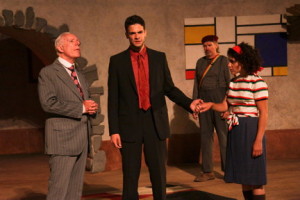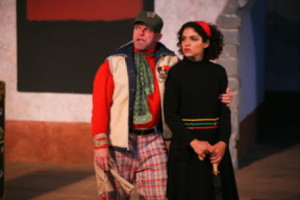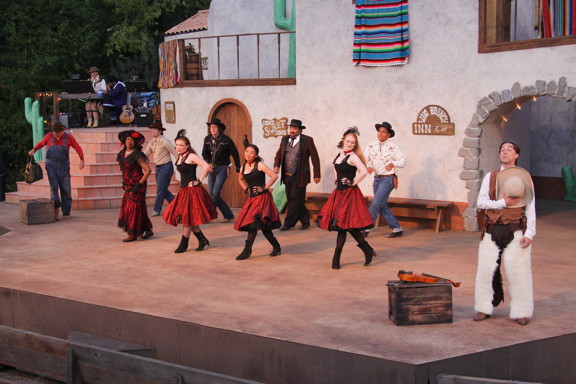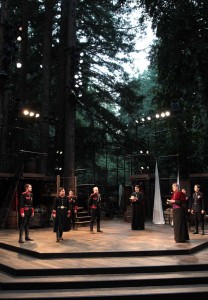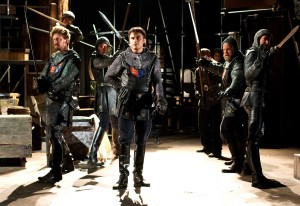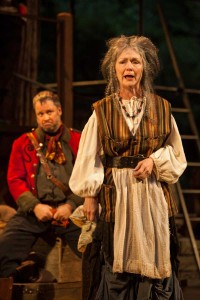A quick roundup of the (classical) fall season in San Francisco
September 19, 2013 § Leave a Comment
What’s in store for classical theater fans this fall? While summer is traditionally the Shakespeare season, there is quite a bit that might interest an aficionado of the pre-modern theater coming soon to the San Francisco area:
Classical Theater Fall in SF
Macbeth, 9/21-22, San Francisco Shakespeare Festival at Jerry Garcia Auditorium, info
All’s Well that Ends Well, thru 9/28, Marin Shakespeare Company, info, my previous review
Comedy of Errors, thru 9/29 , Marin Shakespeare, info, my previous review
Imaginary Invalid, 9/5-29, Pacific Repertory in Carmel, info
Winter’s Tale, 9/25-10/20, California Shakespeare Festival in Orinda, info
Midsummer Night’s Dream, 10/3-20, Pacific Repertory in Carmel, info
Country Wife, 10/9-19, ACT’s MFA program fall repertory at the “Costume Shop.” info
Sueño (Life is a Dream), 10/9-19, ACT’s MFA program fall repertory at the “Costume Shop.” info
Macbeth, thru 10/16, We Players at Fort Point, info
Midsummer Night’s Dream, 10/18-27, UC Berkeley, info
Julius Caesar, San Francisco Shakespeare Festival’s extensive tour, many dates and locations, info
Antigone, 11/10, Cutting Ball Theater’s free Sunday Reading Series, info
Troilus and Cressida, 11/17-12/15, Impact Theatre, info
All’s Well that Ends Well, 12/5-15, Mendocino Theatre Company, info
Romeo and Juliet, 12/13-28, Ninjaz of Drama at the Phoenix, info to be posted here
Related Media:
 The Hollow Crown Series: Richard II, 9/20, Henry IV, Part 1, 9/29 Henry IV, Part 2, 10/4, Henry V, 10/11 PBS info
The Hollow Crown Series: Richard II, 9/20, Henry IV, Part 1, 9/29 Henry IV, Part 2, 10/4, Henry V, 10/11 PBS info
Othello, 10/12, 14, 29, National Theater at the Sundance Kabuki, production info, local ticket into
Macbeth, 11/4, 9 , National Theater at the Kabuki, production info, local ticket into
Coriolanus, 2/15, 17, National Theater at the Kabuki, production info, local ticket into
Review: ALL’S WELL THAT ENDS WELL at Marin Shakespeare Company
September 11, 2013 § 1 Comment
Shakespeare’s Most Underrated Comedy
Marin Shakespeare Company’s excellent production of All’s Well that Ends Well, directed by Robert Currier, convinces me again of the virtues of the play – the most underrated in the canon.
The agenda of this blog is to think about Shakespeare in performance, but simultaneously to explore the challenges of performing Shakespeare. As with diving competitions, it is not just the execution that counts, but also the degree of difficulty! All’s Well is both the best executed and the most difficult of Marin’s three-play repertoire this summer.
For my purposes, it is a terrific example of a show that presents very specific challenges, and as a consequence of those difficulties is rarely performed.
Who Rules the World? Girls!
The first challenge is simply lack of familiarity: The play has long been neglected in part because the best roles are for women. The protagonist is the ingénue, Helen, and the other role for which the play is known is the Countess Roussillon – “the most beautiful old woman’s part every written,” according to Shaw. The great actor-managers of the 18th and 19th centuries saw no opportunities in the play for themselves, so it was not until the 20th century that it began to find its place in the repertoire.
The tone of the play can be very challenging, as well. The play is obviously structured as a comedy, but like many Shakespeare comedies from his middle period, (Measure for Measure, Merchant of Venice, Troilus and Cressida) it is not exactly funny. As the Marin production demonstrates, however, when you get it right the play is magical.
Anticipating the Romances
The plot of the play is, like those of the Romances, a borderline fairy tale. Helen is the orphaned daughter of a great physician. She is now a ward of the recently widowed Countess of Roussillon. She loves the Countess’ son, Bertram, the new Count, but the difference in their social stature is too great for any hope of a match.
With the Countess’ encouragement Helen follows Bertram to the court of the King of France, where the king is slowly dying of a mysterious ailment that is draining his vitality. (For those unfamiliar with Elizabethan euphemisms, the diagnosis of his “fistula” – if recognized at all – is confusing. How can this be put delicately? In modern terms he needs the attention of a urologist, not a proctologist. It is not coincidental that only a fair, young virgin can cure him.)
When the king recovers his health, he is so grateful to Helen that he grants her the choice of any man in the realm as a husband. She selects Bertram, but for the first time in this fairy tale world we are asked to confront a reality. Bertram is not consulted in this match. He is forced to marry her although he openly says he does not love her and is not ready to be married.
Bertram flees without consummating the marriage, and leaves Helen a set of “impossible” conditions for their reconciliation. As in all folklore, the rest of the play is spent with Helen finding ways, through pluck and intelligence, to meet these bizarre requirements and finally win her husband’s love.
When Youth Isn’t Wasted on the Young
In performance both lead characters often come off as unsympathetic. Helen seems dense while Bertram is a jerk. The riskiest move Currier made toward realizing his vision of this play was casting newcomers Carla Pauli as Helena and Adam Magill as Bertram. Some of company’s casting stretches were not so successful in other shows this summer, but these two delivered affecting, heartfelt and convincingly youthful performances that overcame the most common problems encountered in performance.
Helen’s initial choice of Bertram usually seems self-deluding, and her dedication to him even after he has abandoned her can seem pointlessly masochistic. Pauli is so young, and plays the character as so humble, that both actions seem plausible. Interestingly, the play is also exceedingly frank about the character’s understanding of, and interest in, sexuality. She is, after all, a doctor’s daughter. For example, she discusses her virginity almost dispassionately, as something she is more than ready to lose, but only on her own terms. Victorians were appalled at this openness, but in Pauli’s case it made her a very convincing teenager.
Bertram is an even bigger challenge. His rejection of Helen is often played as pure snobbery and even when not intended he often comes across as irredeemably selfish. That is, at least partially, a result of casting actors well into their late twenties or early thirties in the role. (The play does not tell us exactly how old Bertram is, but Currier interprets the description of him as too young to be allowed to go to war – in an era where 16 and 17 year old nobles were often sent off to gain some experience – as meaning that he could still be in his mid-teens.) Magill convincingly parlays his youth into the impression of one more sinned against than sinning- after all, as Jonathan Bate points out in the new RSC Shakespeare, we feel very differently about Shakespeare’s female characters forced into early marriages against their wills than critics have traditionally treated Bertram.
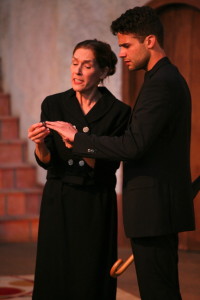
Jessica Powell as The Countess of Rousillion and Adam Magill as her son, Bertram. Photo by Eric Chazankin.
The tall, angular Magill also bears a striking resemblance to the stunning Jessica Powell who plays his mother. She has been a stalwart of the summer, playing roles in all three productions, but it is here that she really shines as the loving, but torn, Countess. Her strong-willed gravity lends Magill’s Bertram extra integrity, even when they find themselves at odds. He seems very much her son.
Exceptional Ensemble
Although often thought of a large show, Marin has edited it so that it is performed by just nine actors. The cast is without a weak link. Scott Coopwood is a charismatic Lafeu, the nobleman who is the closest thing to a father figure to both Bertram and Helen. He also effortlessly absorbs lines and functions traditionally performed by minor characters, allowing the cast to be streamlined.
James Hiser is very funny as the braggart soldier, Parolles, whose cowardice may account not only for his absence from battle but his otherwise unexplainable hostility to sex. (He counsels Bertram to flee his marriage bed, and is later discovered to have intended to subvert an assignation Bertram pursues with a local girl, Diana.) It is when the character is hoodwinked by his fellow soldiers and his cowardice laid bare that Hiser is best. Parolles’ realization that he has lost his honor, but has to live with his disgrace forever, was heartbreaking.
Speaking of that local girl, Diana, – the character was superbly played by Luisa Fransconi, who was so delightful in Livermore Shakespeare’s The Liar earlier in the summer. Heather Cherry played her bombshell mother with equal zest.
Jack Powell played the King of France broadly, literally doing a jig when cured of his illness. He became most believable and affecting late in the play when he was paired with his real life wife, Jessica – playing the Countess – trying to sort out the confusions of the script.
1962?
The production was set in 1962, which I began thinking didn’t really work and came to believe didn’t really matter – except in the case of the clown, Lavatch, played by Lucas McClure. Lavatch is very much in the mold of Twelfth Night‘s Feste, only lascivious. The only thing seemingly grounded in the real world of 1962 was McClure’s wonderful portrayal of Lavatch as a second-rate folk singer. He was hilarious as a combination jester/doorman who was tripping ahead to the summer of love half a decade before anybody else.
Marin uses a single unit set by Shannon Walsh for all three productions, and it is probably too much to ask that it work equally well as a Spanish Castle for the Spanish Tragedy, a Southwestern town for the adaptation of Comedy of Errors set in west Texas, and as Paris, Florence, and Rousillion in this show. The truth is, for this show it doesn’t work. The Rothko and Mondrian hanging on the Mission-style walls just seemed ridiculous. Eventually, however, one settles into the play by treating the background as neutral. It is certainly no weirder than the Tudor-style Elizabethan playhouse of Shakespeare’s time, the reality of which one was to ignore.
The lack of realistic specificity about 1962 did not harm the performance much, however, because its timeless folktale nature must be brought to the fore anyway. That, Currier did brilliantly, especially in the wonderful moment in which the King is cured, ironically accompanied by Moog music and pre-disco lighting effects.
The program and a pre-show talk hinted as a surprise ending, but what emerged was actually an extremely logical non-ending. All may be well that ends well, but in this case we don’t really know what will happen after the curtain falls. We are left to imagine the speed of Bertram’s maturing, and the depth of his repentance, and maybe even the sincerity of his appreciation for Helen. Currier’s Lady-or-the-Tiger finish felt neither like a surprise nor a cop-out, but an entirely Shakespearean moment in which we must piece out their imperfections with our minds.
Review: A COMEDY OF ERRORS (sic) at Marin Shakespeare Company
September 5, 2013 § Leave a Comment
Not “The,” But Certainly “A,” Comedy of Errors
The Marin Shakespeare Company’s country-western version of Comedy of Errors, adapted and directed by Lesley Schisgall Currier and Robert Currier and set in “old-timey” Texas, is silly and slight, but despite it coming from a very different place than is my usual taste it was nonetheless filled with enough delights to keep me entertained and intrigued.
The Comedy of Errors is an outlier among Shakespeare’s comedies. Although “city” comedies were a popular genre in his time, this is Shakespeare’s one and only play in this less-character-driven style. Errors is an adaptation of a play by the ancient Roman playwright Plautus. It is thought by many – including Marin Shakespeare Company’s Artistic Director Robert Currier – to be his earliest work. The widespread, but imho teleological, argument is that “early” equals “not very good.” The play is often performed, fast and loose, with plenty of buttressing. (In the late ’80s, in a version easily accessible online, The Flying Karamazov Brothers performed it as an extended juggling act.)
While disagreeing that the play lacks substance, even those of us that find hidden depth in the text accede that it is, fundamentally, a farce of mistaken identity. While I missed a serious exploration of family loss and reconciliation (“Ugh,” I can hear the directors say, “go watch Pericles!”), from the perspective of pure performance there is lots to see and discuss.
It Happened Like This…
The plot concerns a scattered family. Long ago, parents Aegeon and Aemilia suffered a shipwreck from which each managed to save an identical twin son and that son’s servant, “coincidentally” also a twin, but were parted from each other. Separately, they each managed to see their charges raised to adulthood, without ever knowing the fates of their lost spouses and children.
Years later, Aegeon (of Syracuse in the play, but Amarillo in this version), is traveling around the Mediterranean (Texas) in search of his long lost wife and her charges, and also his own son and servant who had set out on a similar mission years earlier and never returned. He arrives in Ephesus (Abilene) only to find that the cities are at odds, and he is arrested and sentenced to hang at the end of the day if he cannot find someone who will pay his surety.
Unbeknownst to him, his son and his servant have also arrived in town, but have hidden their origins, and move about unhindered. Unbeknownst to them, both the son’s and servant’s lost identical twins are living and prospering in this city. The “errors” of the play are the constant mistaking of the visiting twin for his resident brother, resulting in the visitor being showered with gifts, praise and even a romantic encounter with his “wife,” (although his heart belongs to the unmarried sister-in-law) while his bewildered brother is systematically denied his money, his home and even his identity. Meanwhile the twin servants are constantly encountering the wrong master. Beatings ensue. In the end, a local abbess manages to sort everything out by finally bringing all the family members on stage at once, and providing a surprise twist of her own. No spoiler: if you don’t know how it ends, go see it!
Twins, Twins
In performance, the most interesting question is how to handle the two sets of identical twins – given that finding even one set of talented twin thespians is not an easy task. Most productions do the next best thing – which is to cast similar looking actors and dress them in nearly identical twin costumes, although usually in some color-coded variation to help us sort them. An interesting variation, perfectly in the spirit of farce, is to cast actors who look absolutely nothing like each other and then dress them alike. I’ve seen a hysterically funny performance in which one of the twin servant Dromios was played by a short, rotund, African-American woman and the other by a tall, thin, almost freakishly white dude. The ease with which we, as audience, could tell them apart rendered even funnier the convention by which the onstage characters could not.
Of course, the premise of the plot requires that the twins are never onstage together until the final scene, so a common solution – and the one adopted by Marin – is to cast just one actor to play the twins using the similar-looking doubles only when it finally becomes necessary.
(Okay, there is one earlier scene in which both Dromios are heard, but one is inside a house of which the other is locked out, so usually only one is visible. By far the funniest sight gag of the evening in Marin was that the interior Dromio – played by the uncredited double – was visible through a window, or would have been had he not been holding an increasingly implausible series of tall props that blocked his face. At first he seemed like an inexperienced actor who didn’t quite realize how large the bottle on the tray he was holding was, but by the time he lugged on a life-sized bust of Shakespeare, the joke was clearly intentional.)
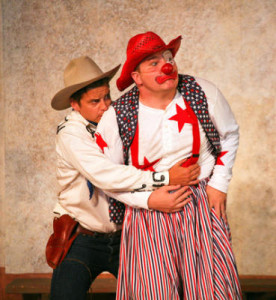
Patrick Russell as Antipholus and Jon Deline as Dromio in Marin Shakespeare Company’s ‘A Comedy of Errors.’ Provided by Eric Chazankin
Star Power
Adopting the single actor solution requires bravura performances. Marin gets them, and then some, from Jon Deline as the Dromios and Patrick Russell as the Antipholi. Literalizing the designation of the Comedians as “Clowns” in Shakespeare’s texts, Deline was costumed (by designer Tammy Berlin) as a rodeo clown with full make-up and fake nose. He is a gifted physical comedian and his best bits were running gags, especially the beatings he took at the hands of his masters. Supplying both grunts and slapping sound effects himself, he managed to alleviate any sense of real harm, while deftly parodying stage combat conventions, by extending the series long beyond the point that his fellow actors mimed contact. The text was so loosely adapted during the entire show, that it made little difference when Deline departed from it, which he did with frequency and relish.
Russell tackled the far more difficult challenge of the Antipholi with astonishing skill. As the visiting Syracuse, he embodied the fresh-faced protagonist perfectly, with growing astonishment as his every wish is granted before it is even spoken, and without any responsibility for his actions. He also captured the loneliness of the character who seemed to be less searching for his missing twin, than trying to find himself. As the smugly privileged brother in Ephesus, his demeanor – not to mention his mounting frustration as his world fell apart – was physicalized so distinctly that it took me a couple of scenes to be certain that the twin performances were being handled by a single actor. When Ephesus finally broke down in what can only be described as a “hissy-fit,” I fell out laughing at his inventiveness.
Bravely, Marin did not color-code the performers in the show. Reappearing in unchanging costumes, they left it to the actors to make clear what is happening. I never had a moment of doubt, however, which Antipholus I was seeing.
Virtuosity
Other kinds of virtuosity were on display in the show, from a cast that doubled as the onstage band, to an extensive display of vocal talent from numerous performers belting out both country-western standards and original songs by Leslie Harlib. Women are generally given short shrift in this play, so Amanda Salazar as Adriana and Elena Wright as Luciana made the most of their opportunities for musical expansion. Shirley Smallwood stopped the show with one great ballad incorporated into her tiny part as the Courtesan. The inserted music was not always well-integrated, and often only a line or two or a famous song was quoted as commentary, but the performances were still impressive. (I’m convinced that the Amarillo was selected as the substitute for Syracuse solely so that Russell could sing “Amarillo by Morning.”) The original songs, however, were more cohesive. Musically they were cw simplistic, but the lyrics were exceptionally clever.
Gary Grossman delivered the most irreverently funny performance of the evening as Dr. Pinch, a crackpot imported to cure the “madness” of Antipholus of Ephesus. Dr. Pinch was portrayed as an Indian Medicine Man, of the most horrendous stereotypical style possible, complete with “How”s and “Ug”s. It might have been unendurably offensive if intended as anything like a real comment on Native Americans, but Grossman performed it all in the broadest Borscht Belt style (and dialect) possible. His chants of “Hey, yu, yu, yu”s had a way of morphing into “Hava Nagila.” In under five minutes he managed to pillory everything from psychoanalysis to the nonsensical premise of the show in the Wild West.
You gotta laugh at a production that can laugh at itself.
